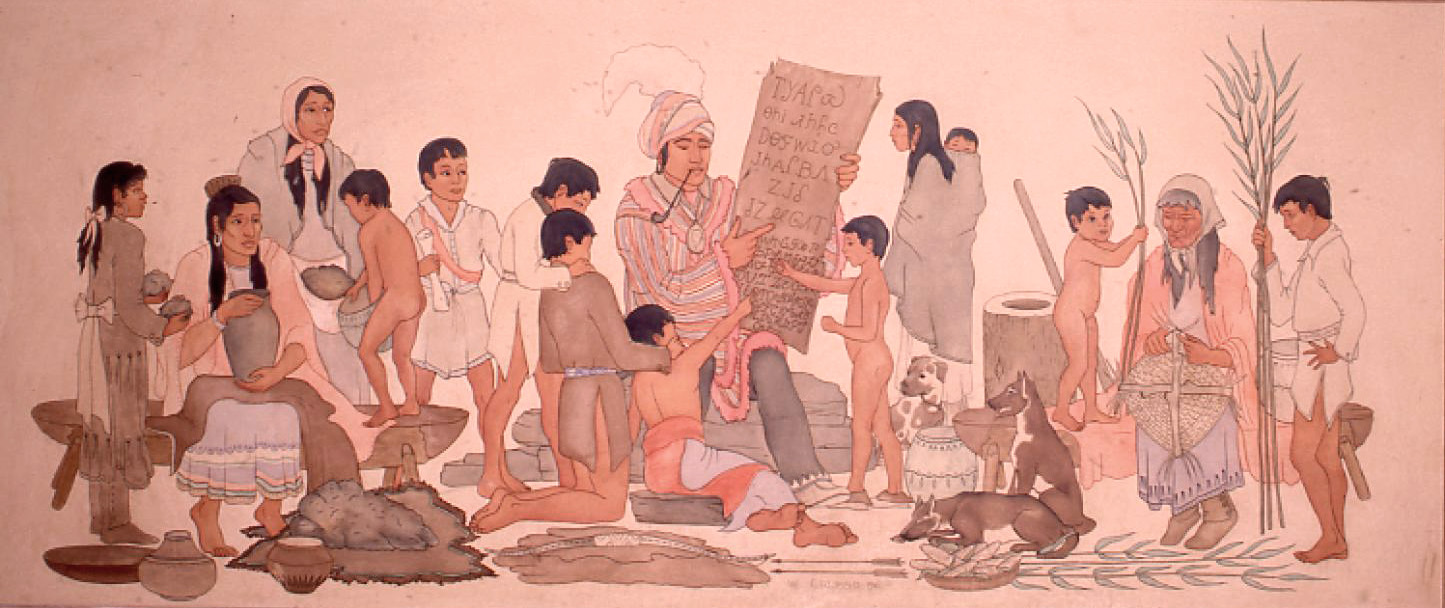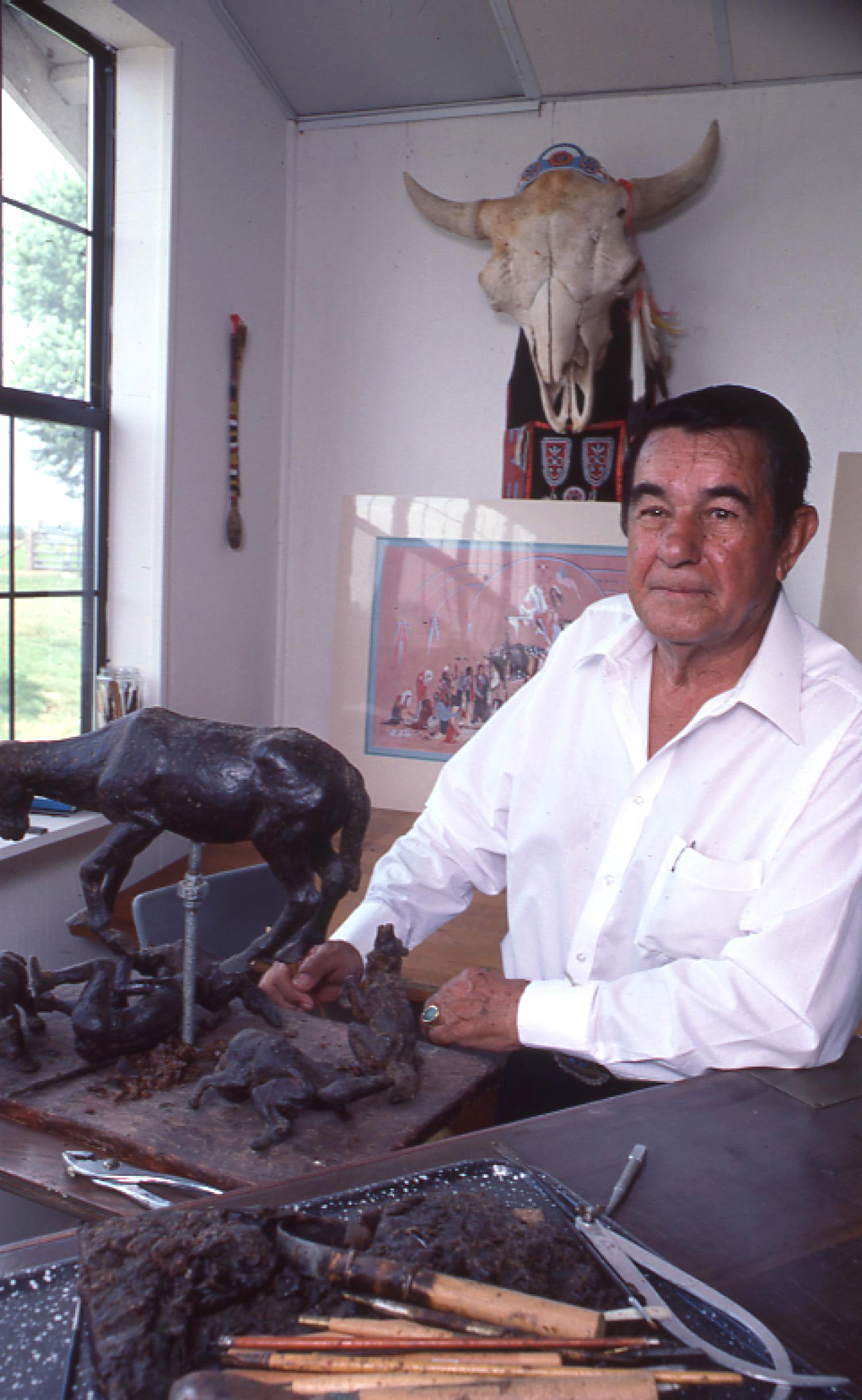
The Encyclopedia of Oklahoma History and Culture
CRUMBO, WOODROW WILSON (1912–1989).
A Citizen Potawatomi artist, dancer, and musician born on January 21, 1912, near Lexington, Oklahoma, "Woody" Crumbo was orphaned at the age of seven and received no schooling past the third grade. At seventeen he resumed his formal education at the government Indian school at Chilocco. Meanwhile, he received private instruction in art from Anadarko teacher Suzie Peters, who supplied him with materials and taught him the basics of drawing and painting.
At age nineteen Crumbo received a scholarship from the American Indian Institute in Wichita, Kansas, to study art, anthropology, and music. He graduated valedictorian of his class in 1933. From 1933 to 1936 he attended Wichita University, taking classes in mural painting from Olaf Nordmark and watercolor painting from Clayton Staples. Having organized an Indian dance troupe in 1933, Crumbo won a national dance contest in 1935 and later toured with the Thurlow Laurance Symphony. From 1936 to 1938 he attended the University of Oklahoma in Norman and studied painting and drawing under Oscar B. Jacobson, who is credited with having advanced the careers of a number of American Indian artists.
In 1938 Crumbo succeeded Acee Blue Eagle as art director of Bacone College in Muskogee. He held this position through 1941 and again from 1943 to 1945 after a period of employment with Douglas Aircraft Company in Tulsa. Between 1945 and 1948 he was employed by Tulsa collector Thomas Gilcrease as artist-in-residence at the Gilcrease Museum. In 1948 Crumbo moved with his family to Taos, New Mexico, and he resided there until he joined the staff of the El Paso Art Museum in El Paso, Texas, as a curator in 1960. From 1965 to 1968 he served as assistant director. In 1973 he moved back to Oklahoma, settled near Checotah, and he continued to paint and promote Native art and artists.
Crumbo exhibited in more than two hundred regional, national, and international shows. He became widely known to the art-buying public through the distribution of his etchings and serigraphs. He was formally inducted into the Oklahoma Hall of Fame in 1978 and served on the State Arts Council through 1984. He was nominated as Oklahoma's Ambassador of Good Will in 1982. Moving to Cimarron, New Mexico in 1988, Crumbo died there on April 4 of the following year and was buried in Okmulgee, Oklahoma.
Examples of his work are found in many public and private collections, including the Gilcrease and Philbrook museums in Tulsa, the Creek Council House Museum in Okmulgee, the American Museum of Natural History in New York City, university galleries in Wichita and Norman, the San Francisco Museum of Art, and the Corcoran Gallery, National Museum of the American Indian, and U.S. Department of the Interior in Washington, D.C.
See Also
ART–AMERICAN INDIAN, BACONE COLLEGE, ACEE BLUE EAGLE, OSCAR BROUSSE JACOBSON, WILLARD STONE







